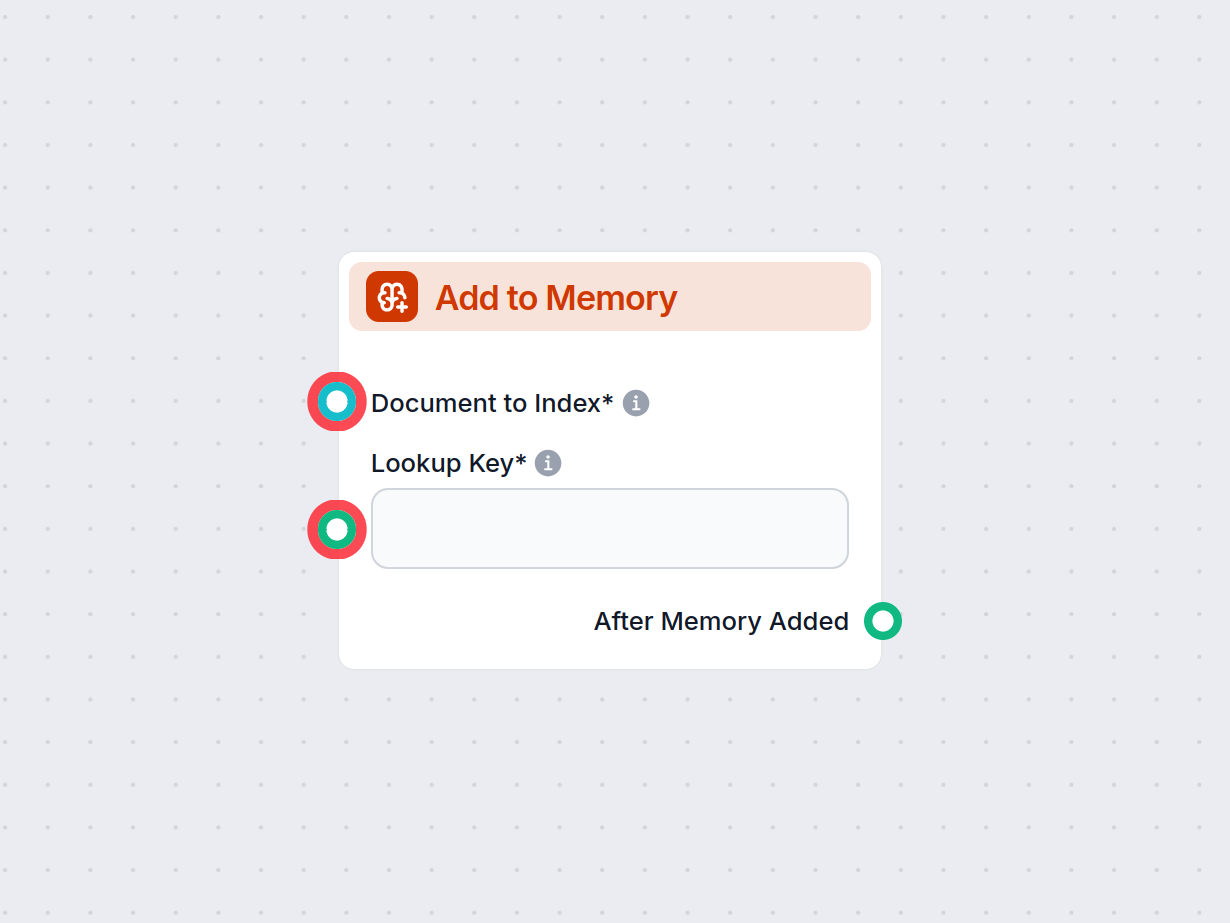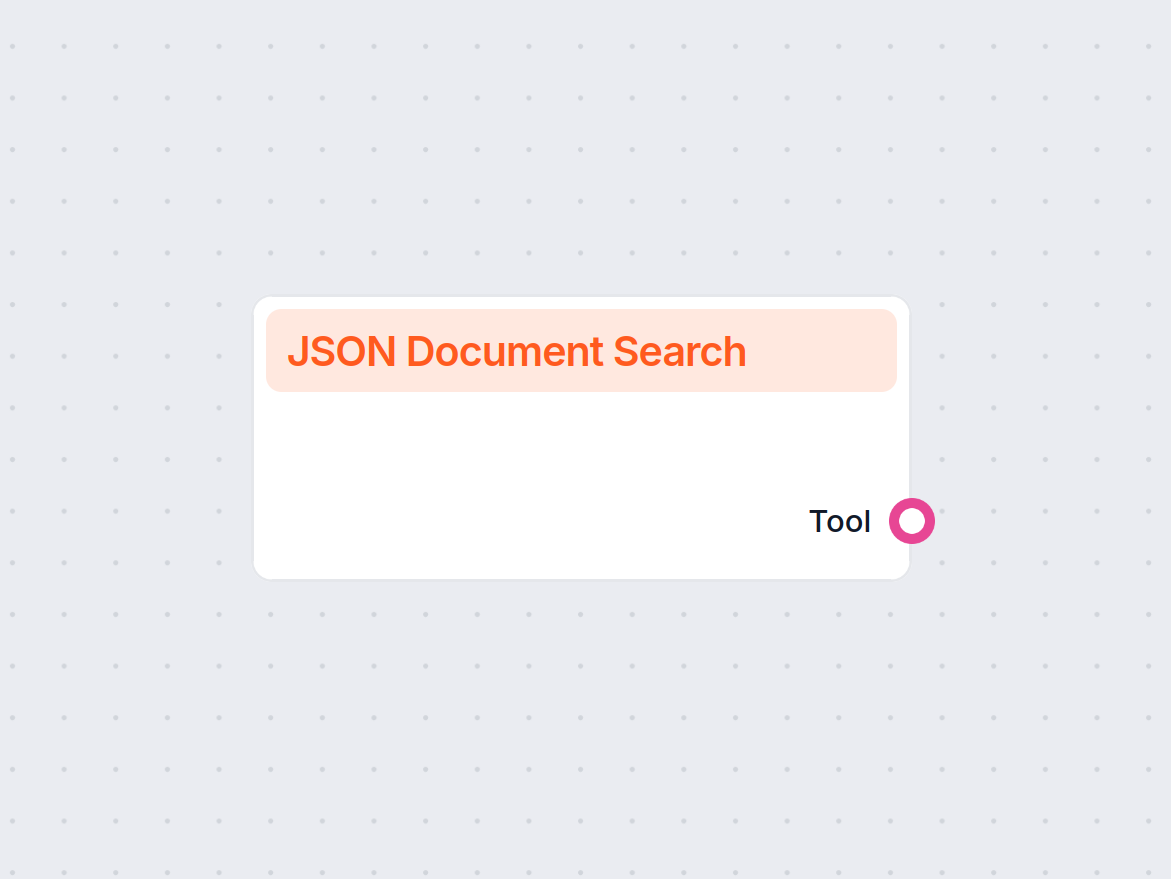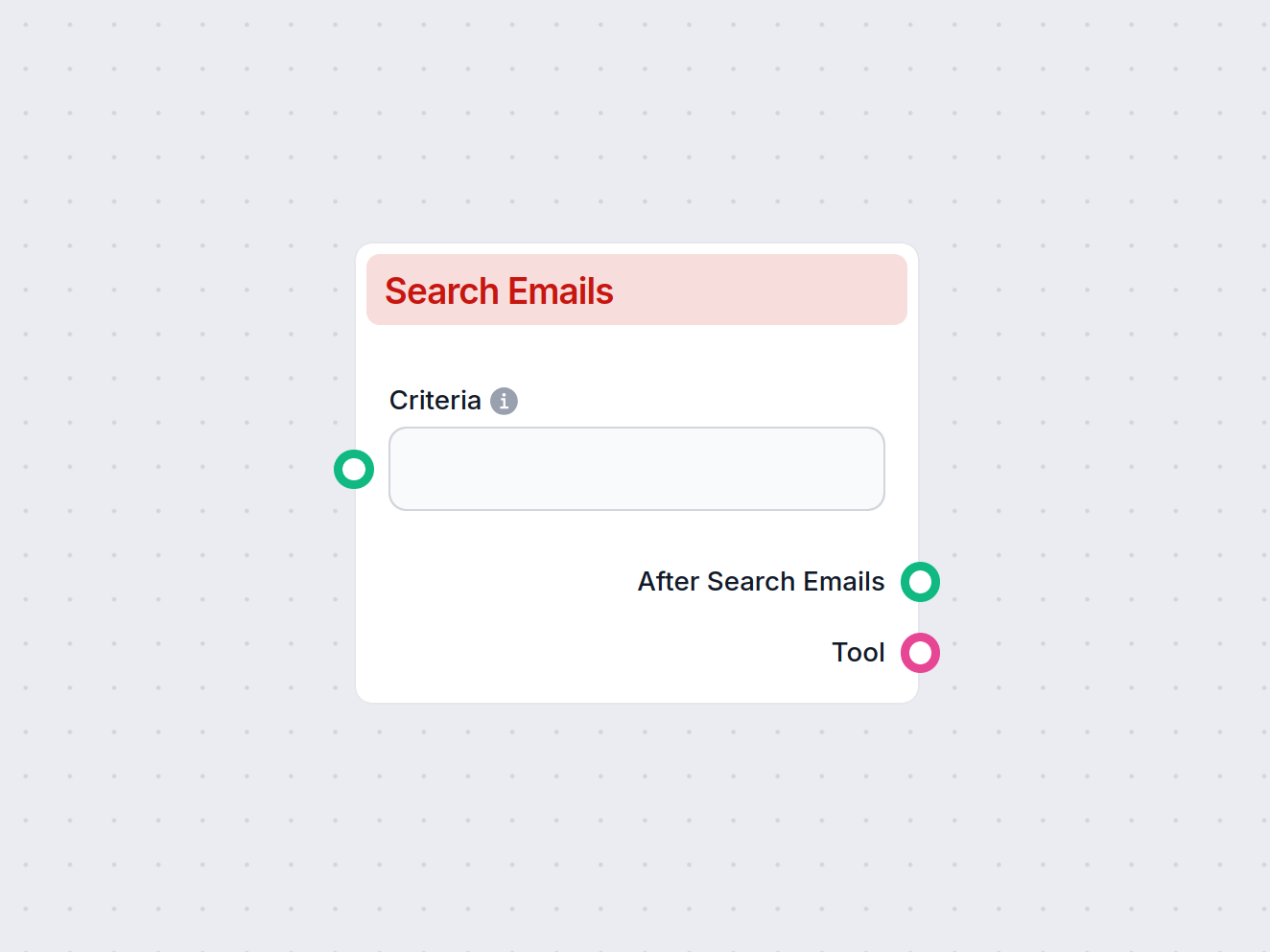
Zur Erinnerung hinzufügen
Speichern Sie wichtige Informationen ganz einfach in Ihrem Workflow mit der Komponente „Zur Erinnerung hinzufügen“. Speichern Sie nahtlos Daten oder Dokumente i...

Die Komponente Speichersuche ermöglicht es Ihrem Flow, Informationen aus gespeichertem Speicher basierend auf Benutzeranfragen abzurufen und unterstützt so kontextbezogene und wissensbasierte Workflows.
Komponentenbeschreibung
The Search Memory component is designed to retrieve relevant information from your workflow’s memory storage, often referred to as “Long Term Memory”. It takes a user query and searches stored documents or knowledge resources, returning the most related content. This is particularly useful for AI workflows that need to reference previous information, retrieve supporting documents, or provide context-aware responses.
| Input Name | Type | Required | Description | Default Value |
|---|---|---|---|---|
| Title | str | No | Title of the block in the output. | Related resources |
| Result limit | int | Yes | Number of results to return. | 3 |
| From pointer | bool | Yes | If true, loads from the best matching point in the document; otherwise, loads all. | true |
| Hide resources | bool | No | If true, hides the retrieved resources from output. | false |
| max_tokens | int | No | Maximum number of tokens in the output text. | 3000 |
| strategy | str | Yes | Strategy for aggregating content: “Concat documents, fill from first up to tokens limit” or “Include equal size from each document”. | Include equal size from each documents |
| threshold | float | No | Similarity threshold for retrieved results (0 to 1). | 0.8 |
| tool_description | str | No | Description for the tool, used by agents to understand its function. | (empty) |
| tool_name | str | No | Name for the tool in the agent. | (empty) |
| use_content | multi-select | No | Which content types to export (e.g., H1-H6, Paragraph). | All (H1-H6, Paragraph) |
| verbose | bool | No | Whether to print verbose output for debugging or insights. | false |
| Input Name | Type | Required | Description | Default Value |
|---|---|---|---|---|
| Lookup key | str | No | Key used to locate specific information in Long Term Memory. | (empty) |
| Input query | str | Yes | The search query to use in memory lookup. | (empty) |
The component provides multiple output formats to suit different needs:
| Output Name | Type | Description |
|---|---|---|
| documents | Message | Retrieved content as message(s) |
| documents_raw | Document | Raw, unprocessed document content |
| documents_as_tool | Tool | Documents formatted for use as a tool in agent workflows |
| Feature | Benefit |
|---|---|
| Query-based search | Finds the most relevant stored information for any user query |
| Output options | Choose between message, raw document, or tool formats |
| Custom retrieval | Control over number of results, similarity threshold, and content |
| Integrates with AI | Ideal for AI agents needing dynamic access to stored knowledge |
This component is a versatile building block for any AI workflow that requires memory search, document retrieval, or contextual augmentation.
Speichersuche ermöglicht es Ihrem Workflow, relevante Informationen aus gespeichertem Speicher oder Dokumenten anhand von Eingabeanfragen abzurufen, sodass Ihre KI-Lösungen kontextbewusster werden.
Es werden die Dokumente abgerufen, die am besten zur Eingabeanfrage passen, mit Optionen zur Begrenzung der Anzahl der Ergebnisse und zur Steuerung des Ausgabeformats oder der Strategie.
Ja, Sie können ein Ergebnislimit festlegen, auswählen, welche Dokumenteninhaltsarten einbezogen werden, und Strategien zum Kombinieren von Dokumentenauszügen anpassen.
Durch den Zugriff auf vorheriges Wissen oder Langzeitspeicher kann Ihr Bot fundiertere, genauere und kontextbezogenere Antworten liefern.
Absolut. Sie ist so konzipiert, dass sie in komplexe Flows integriert werden kann, bei denen der Abruf von Kontext oder Wissen aus früheren Daten entscheidend für intelligente Automatisierung ist.
Steigern Sie Ihre KI-Lösungen durch Integration von Speichersuche und -abruf. Verbinden Sie sich mit langfristigem Wissen und liefern Sie intelligentere Antworten.
Speichern Sie wichtige Informationen ganz einfach in Ihrem Workflow mit der Komponente „Zur Erinnerung hinzufügen“. Speichern Sie nahtlos Daten oder Dokumente i...
Die Komponente JSON-Dokumentensuche ermöglicht leistungsstarke Suchfunktionen innerhalb von JSON-Dateien, entweder per Textsuche oder mit erweiterten Abfrageaus...
Die Komponente 'E-Mails durchsuchen' ermöglicht es Ihnen, automatisch E-Mails aus Gmail anhand bestimmter Kriterien zu finden und abzurufen. Sie unterstützt gef...
Cookie-Zustimmung
Wir verwenden Cookies, um Ihr Surferlebnis zu verbessern und unseren Datenverkehr zu analysieren. See our privacy policy.

